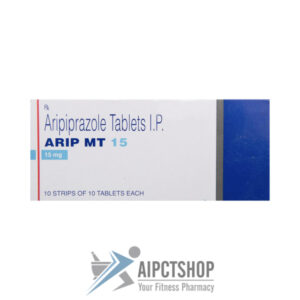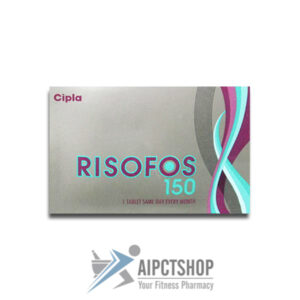Ziprasidone Information
Pronunciation
zi PRAS i done
What is this drug used for?
– It is used to treat schizophrenia.
– It is used to treat bipolar problems.
– It may be given to you for other reasons. Talk with the doctor.
Frequently reported side effects of this drug
– Fatigue
– Restlessness
– Loss of strength and energy
– Nausea
– Vomiting
– Anxiety
– Constipation
– Diarrhea
– Dry mouth
– Headache
– Cough
– Weight gain
– Runny nose
– Injection site irritation
Other side effects of this drug: Talk with your doctor right away if you have any of these signs of:
– Infection
– High blood sugar like confusion, feeling sleepy, more thirst, hunger, passing urine more often, flushing, fast breathing, or breath that smells like fruit.
– Thoughts of suicide
– Severe dizziness
– Passing out
– Fast heartbeat
– Slow heartbeat
– Behavioral changes
– Mood changes
– Change in balance
– Abnormal movements
– Twitching
– Trouble swallowing
– Trouble speaking
– Abnormal heartbeat
– Seizures
– Vision changes
– Enlarged breasts
– Sexual dysfunction
– Nipple discharge
– No menstrual periods
– Erection that lasts more than 4 hours
– Neuroleptic malignant syndrome like fever, muscle cramps or stiffness, dizziness, very bad headache, confusion, change in thinking, fast heartbeat, abnormal heartbeat, or sweating a lot
– Tardive dyskinesia like unable to control body movements; tongue, face, mouth, or jaw sticking out; mouth puckering; and puffing cheeks
– Stevens-Johnson syndrome/toxic epidermal necrolysis like red, swollen, blistered, or peeling skin (with or without fever); red or irritated eyes; or sores in mouth, throat, nose, or eyes
– Signs of a significant reaction like wheezing; chest tightness; fever; itching; bad cough; blue skin color; seizures; or swelling of face, lips, tongue, or throat.
Medication Safety Issues
Sound-alike/look-alike issues:
Ziprasidone may be confused with TraZODone
Geriatric Patients: High-Risk Medication:
Beers Criteria: Antipsychotics are identified in the Beers Criteria as a potentially inappropriate medication to be avoided in patients 65 years and older due to an increased risk of cerebrovascular accidents (stroke) and a greater rate of cognitive decline and mortality in patients with dementia. Antipsychotics may be appropriate for schizophrenia, bipolar disorder, other mental health conditions or short-term use as antiemetic during chemotherapy but should be given in the lowest effective dose for the shortest duration possible. In addition, antipsychotics should be used with caution in older adults due to their potential to cause or exacerbate syndrome of inappropriate antidiuretic hormone secretion (SIADH) or hyponatremia; monitor sodium closely with initiation or dosage adjustments in older adults (Beers Criteria [AGS 2019]).
Storage and Stability
Capsule: Store at 25?C (77?F); excursion permitted to 15?C to 30?C (59?F to 86?F).
Vials for injection: Store at 25?C (77?F); excursion permitted to 15?C to 30?C (59?F to 86?F). Protect from light. Following reconstitution, injection may be stored at room temperature up to 24 hours or under refrigeration for up to 7 days. Protect from light.
Adverse Reactions
Note:?Although minor QTc prolongation (mean: 10 msec at 160 mg/day) may occur more frequently, clinically relevant prolongation (>500 msec) was rare and less than placebo.
Cardiovascular: Angina pectoris, bradycardia, chest pain, facial edema, hypertension, orthostatic hypotension (may be dose-related), peripheral edema, tachycardia
Central nervous system: Agitation, akathisia, amnesia, anorgasmia, anxiety (may be dose-related), ataxia, atrial fibrillation, chills, confusion, delirium, dizziness (includes lightheadedness; may be dose-related), drowsiness (may be dose-related), dystonia (may be dose-related), extrapyramidal reaction, falling, flank pain, headache, hostility, hypoesthesia, hypothermia, insomnia, male sexual disorder, paralysis, personality disorder, speech disturbance, vertigo, withdrawal syndrome
Dermatologic: Alopecia, contact dermatitis, diaphoresis, ecchymoses, eczema, exfoliative dermatitis, fungal dermatitis, furunculosis, maculopapular rash, skin photosensitivity, skin rash (may be dose-related), urticaria, vesiculobullous dermatitis
Endocrine & metabolic: Albuminuria, amenorrhea, dehydration, glycosuria, hypercholesterolemia, hyperglycemia, hypermenorrhea, hypokalemia, increased lactate dehydrogenase, increased thirst, weight gain
Gastrointestinal: Abdominal pain, anorexia (may be dose-related), buccoglossal syndrome, constipation, diarrhea, dysmenorrhea, dyspepsia, dysphagia, nausea, sialorrhea (may be dose-related), vomiting, xerostomia (may be dose-related)
Genitourinary: Hematuria, impotence, lactation, priapism, urinary retention
Hematologic & oncologic: Anemia, eosinophilia, leukocytosis, leukopenia, lymphadenopathy, rectal hemorrhage
Hepatic: Increased serum alkaline phosphatase, increased serum transaminases
Hypersensitivity: Tongue edema
Local: Pain at injection site
Neuromuscular & skeletal: Abnormal gait, akinesia, choreoathetosis, cogwheel rigidity, dysarthria, dyskinesia, hyperkinesia, hypertonia, hypokinesia, hypotonia, increased creatine phosphokinase, myalgia, neuropathy, paresthesia, tenosynovitis, tremor (may be dose-related), twitching, weakness (may be dose-related)
Ophthalmic: Blepharitis, cataract, conjunctivitis, diplopia, oculogyric crisis, photophobia, visual disturbance (may be dose-related), xerophthalmia
Otic: Tinnitus
Renal: Polyuria
Respiratory: Cough, dyspnea, epistaxis, flu-like symptoms, pharyngitis, pneumonia, respiratory tract infection, rhinitis
Miscellaneous: Accidental injury, fever, motor vehicle accident










Reviews
There are no reviews yet